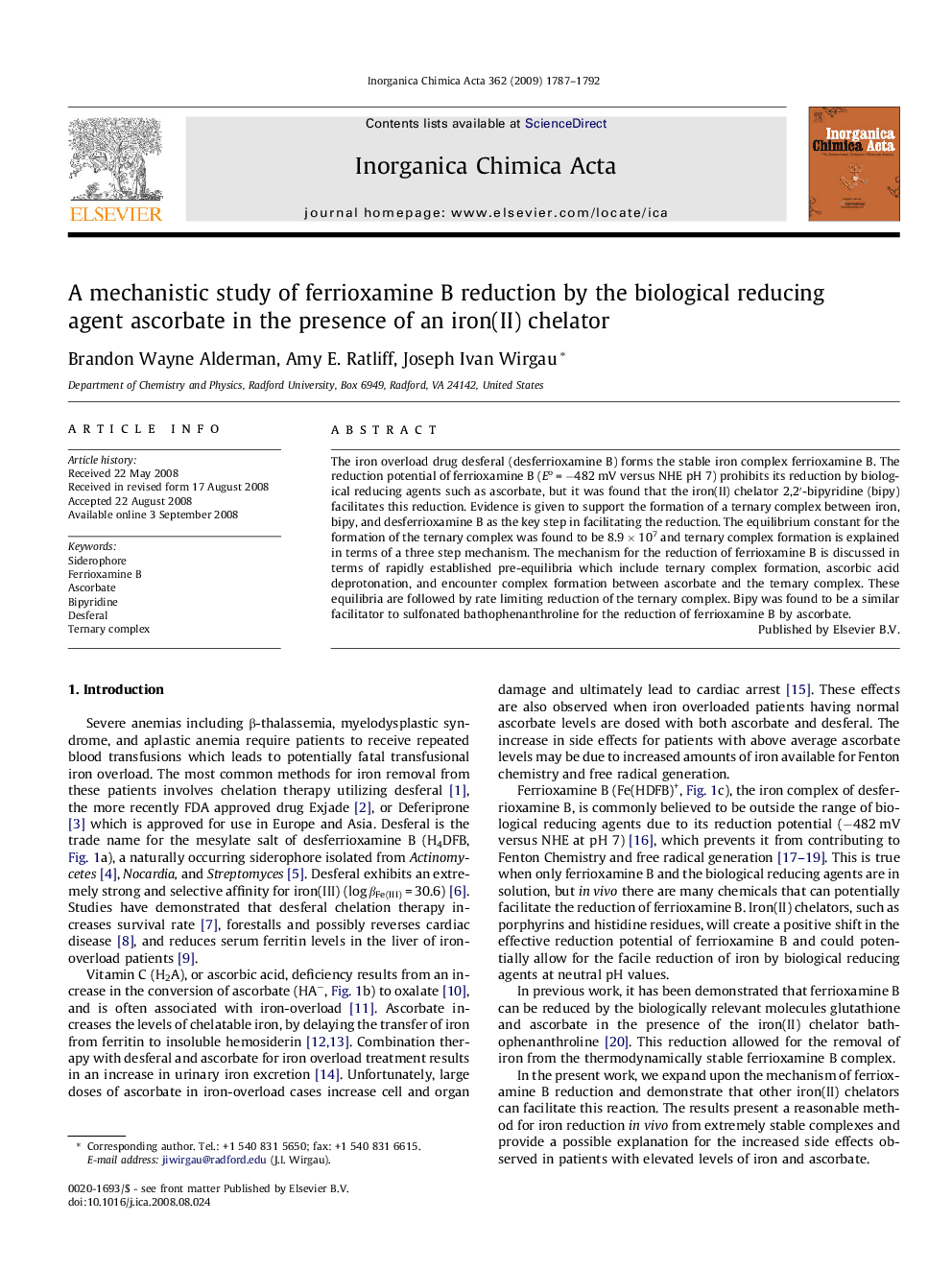| Article ID | Journal | Published Year | Pages | File Type |
|---|---|---|---|---|
| 1311381 | Inorganica Chimica Acta | 2009 | 6 Pages |
The iron overload drug desferal (desferrioxamine B) forms the stable iron complex ferrioxamine B. The reduction potential of ferrioxamine B (Eo = −482 mV versus NHE pH 7) prohibits its reduction by biological reducing agents such as ascorbate, but it was found that the iron(II) chelator 2,2′-bipyridine (bipy) facilitates this reduction. Evidence is given to support the formation of a ternary complex between iron, bipy, and desferrioxamine B as the key step in facilitating the reduction. The equilibrium constant for the formation of the ternary complex was found to be 8.9 × 107 and ternary complex formation is explained in terms of a three step mechanism. The mechanism for the reduction of ferrioxamine B is discussed in terms of rapidly established pre-equilibria which include ternary complex formation, ascorbic acid deprotonation, and encounter complex formation between ascorbate and the ternary complex. These equilibria are followed by rate limiting reduction of the ternary complex. Bipy was found to be a similar facilitator to sulfonated bathophenanthroline for the reduction of ferrioxamine B by ascorbate.
Graphical abstractThe ability of ferrioxamine B to generate free radicals invivo is demonstrated through its reduction by ascorbate in the presence of the iron(II) chelator bipyridine.Figure optionsDownload full-size imageDownload as PowerPoint slide
